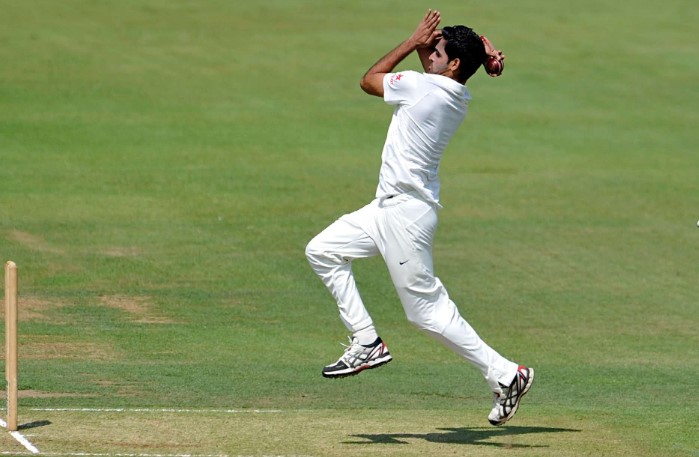Mastering the Art of Fast Bowling: Fast bowling is one of the most exciting and physically demanding aspects of cricket. It requires not just raw speed but also a variety of skills and techniques to keep the batsman guessing, outthink the opposition, and deliver consistently at high levels. While speed is often the most celebrated attribute of a fast bowler, the real magic lies in the variations they can master. These variations add a level of deception, unpredictability, and precision, transforming a bowler from simply fast to a true threat.
Mastering the Art of Fast Bowling
In this article, we will explore the key variations that fast bowlers use to dominate the game, the techniques involved in executing them, and how these deliveries can be employed to outfox batsmen. From the classic bouncer to the elusive slower ball, mastering these variations is crucial for fast bowlers looking to enhance their arsenals and leave a lasting impact on the game.
1. The Bouncer
The bouncer is perhaps the most iconic and aggressive delivery in a fast bowler’s repertoire. It’s a short-pitched ball delivered at high speed, aimed at intimidating the batsman by rising towards their head or chest. When executed well, a bouncer can force a batsman into a defensive position or even induce a mistake, such as a top edge or an unforced shot.
Technique:
- The bowler runs in with a similar action to their regular delivery but shortens the length and adjusts the point of release.
- The ball is pitched short of a good length, targeting the batsman’s body, particularly around the head or ribs.
- The key to a successful bouncer is speed and bounce. The bowler should generate enough pace and extract good bounce from the pitch to make the ball uncomfortable for the batsman.
While the bouncer can be a potent weapon, it also carries risks. A poorly executed bouncer can be easily pulled or hooked to the boundary. As such, fast bowlers often mix the bouncer with other variations to avoid predictability.
2. The Yorker
The yorker is a delivery that is often regarded as one of the toughest to execute but one of the most effective when done right. It is delivered at full length, aiming to hit the batsman’s toes or the base of the stumps. A well-executed yorker is difficult to defend and can often result in bowled or LBW (Leg Before Wicket) dismissals.
Technique:
- The bowler aims to bowl the ball as full as possible, with the goal of targeting the batsman’s feet or the stumps.
- A fast bowler needs to release the ball with precision, ensuring that it lands on or around the batsman’s toes, giving them little room to maneuver.
- To master the yorker, a bowler needs to work on accuracy and consistency, as even a slight error can result in the ball drifting down the leg side or being easily driven.
The yorker is especially useful in the death overs of limited-overs cricket, where the batsman is looking to score quickly and often plays with an expansive shot. A well-timed yorker can catch a batsman off guard, making it a crucial weapon for fast bowlers.
3. The Slower Ball
The slower ball is a variation that can throw off a batsman’s timing by reducing the pace of the delivery. Fast bowlers use this to deceive the batsman into mistiming their shots, resulting in a catch or a mistimed shot.
Technique:
- The bowler changes their grip or releases the ball with less force, either by gripping the ball with the fingers more loosely or using a different finger position.
- There are several types of slower balls, including the off-cutter, leg-cutter, and back-of-the-hand delivery. Each variation has a slightly different technique but all involve reducing the ball’s speed.
- For a slower ball to be effective, the bowler needs to disguise it well within their normal action, so the batsman doesn’t pick up on the change in pace until it’s too late.
The key to a successful slower ball is timing and deception. If a fast bowler can slow the ball down without altering their action too much, they can easily get batsmen to misjudge their shots and lead to an easy dismissal.
4. The Reverse Swing
Reverse swing is one of the most mysterious and exciting aspects of fast bowling. It occurs when a bowler is able to get the ball to swing in the opposite direction to what the seam position suggests. Reverse swing is more common with an older ball, especially in dry or abrasive conditions.
Technique:
- Reverse swing is created by the fast bowler managing the ball’s wear and tear. One side of the ball is kept shiny, while the other side is allowed to rough up, leading to a greater contrast in air pressure around the ball.
- The bowler bowls with a high pace and angles the seam in such a way that it causes the ball to swing in the opposite direction to conventional swing.
- For reverse swing to be effective, a bowler must have exceptional control over the seam and wrist position, as well as the ability to adjust their deliveries depending on the ball’s condition.
Reverse swing is a lethal weapon, particularly in Test cricket, where conditions allow the ball to age and develop uneven wear. Bowlers like Wasim Akram and James Anderson have mastered reverse swing, using it to great effect in all formats of the game.
5. The Outswinger and Inswinger
Both the outswinger and inswinger are essential deliveries in a fast bowler’s arsenal. These deliveries involve moving the ball either away or into the batsman, respectively, and are useful for creating pressure or setting up a batsman for a wicket.
Outswinger:
- The outswinger moves away from the batsman (for a right-handed batsman, this means moving from leg to off).
- The technique involves holding the ball with the seam angled towards first or second slip while maintaining a high wrist position.
- A well-executed outswinger can get the batsman to nick the ball behind to the wicketkeeper or slips.
Inswinger:
- The inswinger moves in towards the batsman, typically angling into the off-stump.
- The technique involves holding the ball with the seam angled towards leg slip or leg gully, and the bowler needs to focus on swinging the ball inwards while maintaining a straight trajectory.
- An inswinger can trap a batsman LBW or induce an inside edge to the leg side.
The outswinger and inswinger are critical for fast bowlers to set up a batsman. By varying the length and the position of the seam, the bowler can force the batsman to play at deliveries they would otherwise leave, increasing the chances of an error.
6. The Bouncer Variation (Leg Cutter & Off Cutter)
Fast bowlers use the leg cutter and off cutter to add an extra dimension to their bouncers, especially on pitches that offer uneven bounce or pace. These cutters are variations of the bouncer but with the added twist of the ball’s seam being manipulated to produce swing or spin.
Technique:
- Leg Cutter: The bowler delivers the ball with the seam pointing towards the slips, creating a movement that causes the ball to cut in towards the batsman.
- Off Cutter: In contrast, the off cutter involves the bowler holding the ball with the seam pointing towards gully or first slip, causing the ball to move away from the batsman.
Both cutters can be combined with bouncers to create uncertainty for the batsman, forcing them to play awkward shots or mistimed pulls.
The Fast Bowler’s Art
Fast bowling is a multifaceted skill, and mastering its variations requires not only natural ability but hours of practice and mental sharpness. Whether it’s the ferocity of a bouncer, the precision of a yorker, or the deception of a slower ball, fast bowlers can use these variations to keep batsmen guessing, create pressure, and take wickets. The best fast bowlers are those who can not only bowl fast but can also master these variations to become true match-winners.
By understanding and honing these key fast bowling techniques, a bowler can increase their effectiveness across different formats and conditions, making them a formidable force in any match. So, whether you’re an aspiring fast bowler or a seasoned professional, remember that the art of fast bowling isn’t just about speed—it’s about mastering the variations that can win you matches.
Also Read: Googly in Spin Bowling: The Mystery Delivery Explained













